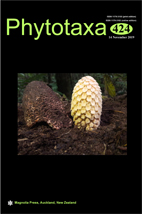Abstract
Paris nitida is a newly published species, but little is known about its morphological characteristics, distribution and phylogenetic relationship. In this study, field investigation, literature study, morphological observation and molecular nrITS sequence analysis were used to improve knowledge of this species. Morphological traits of P. nitida were found to be more similar to those of Paris fargesii var. brevipetalata, rather than Paris caobangensis as reported before; moreover, a new distribution record in the centre of the Yunnan-Guizhou Plateau was found; additionally, P. nitida was clustered with Paris fargesii var. fargesii, P. fargesii var. brevipetalata, and P. caobangensi in a NJ tree based on the ITS sequences. Accordingly, P. nitida is more closely related to P. sect. Fargesianae rather than P. caobangensis; the habitat of P. nitida is located from south of the Yangtze River to the north of the Nanling Mountains, mainly including the central part of Yunnan-Guizhou Plateau and central Chinese mountains. It is geographically isolated from P. caobangensis, which occurs in northern Vietnam. The central part of Yunnan-Guizhou Plateau may be its area of origin.

